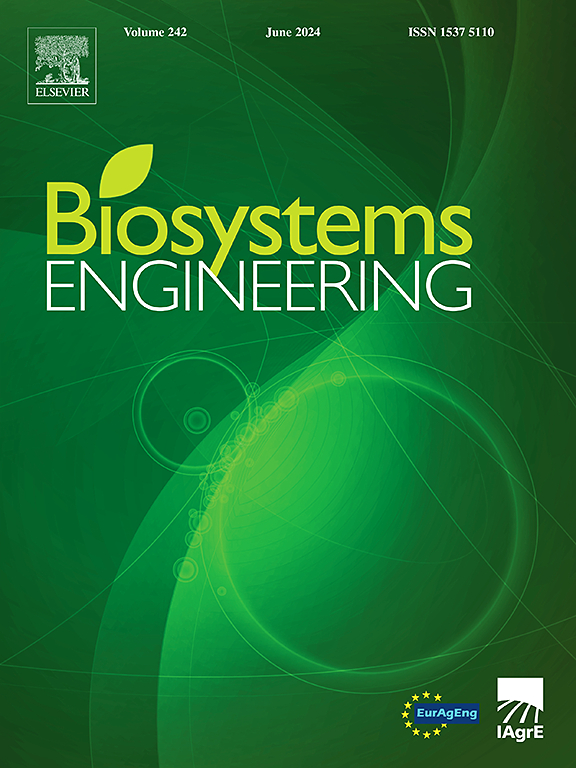Study of pollen deposition performance of an airflow-assisted targeted pollinating device for kiwi fruit flower
IF 4.4
1区 农林科学
Q1 AGRICULTURAL ENGINEERING
引用次数: 0
Abstract
Successful delivery and a sufficient quantity of pollen to stigmas are critical factors in improving fruit shape and weight, increasing pollination accuracy and decreasing pollen consumption, which have practical and financial benefits in large-scale agriculture. First, the adhesion structure of pollen-on-stigma was observed by cryo-scanning electron microscopy (SEM), and adhesion force was tested with atomic force microscopy (AFM). It was found that there is a natural adhesive adaptability between pollen and stigma. Then, an optimal design approach for pollinator was proposed to maximize pollen deposition fraction in targeting pollination. Computational fluid dynamics (CFD) was adopted to simulate the impact of airflow on pollen deposition; and the discrete phase model (DPM) was employed to track the particles’ trajectory and distribution on target area. The dependability of simulation was verified by experimental results obtained under identical parameters. Three airflow delivery velocities were selected with three protrusion heights, three feeding positions, and three contraction conical angles on the deposition fraction of pollen were investigated. The results indicated that the contraction conical angle of pollinator pipe has the greatest impact on targeted delivery of pollen, the best pollen distribution and the maximum deposition fraction occurring at 10°. An airflow delivery velocity of 3 m s−1 is optimal for pollination operations. Once the optimal contraction conical angle and airflow delivery velocity are determined, the protrusion height of 7 mm combined with the feeding position of 15 mm can offer better deposition efficiency. Computational and experimental results are helpful for further pollination design.

求助全文
约1分钟内获得全文
求助全文
来源期刊

Biosystems Engineering
农林科学-农业工程
CiteScore
10.60
自引率
7.80%
发文量
239
审稿时长
53 days
期刊介绍:
Biosystems Engineering publishes research in engineering and the physical sciences that represent advances in understanding or modelling of the performance of biological systems for sustainable developments in land use and the environment, agriculture and amenity, bioproduction processes and the food chain. The subject matter of the journal reflects the wide range and interdisciplinary nature of research in engineering for biological systems.
 求助内容:
求助内容: 应助结果提醒方式:
应助结果提醒方式:


